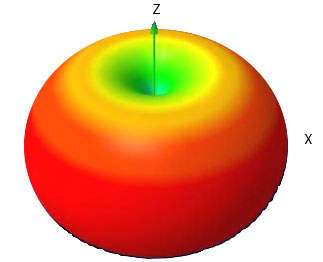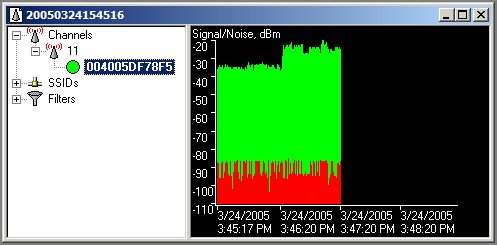Antennae
An antenna converts the electrical signal coming from a transmitter to radio waves. (The receiving antenna detects those radio waves and converts them back to an electrical signal).
An antenna does not add power to the signal, but can extend its reach by focusing or shaping the radiation pattern.
Antennae are like flashlights. If you have a bare flashlight bulb, you might be able to see it from 100 feet away. If you put it in a flashlight with a reflector behind it, and aim the beam, it might be visible from 200 feet away, but it would no longer be visible from the sides and from behind the flashlight. Putting a lens in front of the bulb could further focus and extend the reach of the flashlight.
An antenna that, like a bare bulb, radiates equally in all directions, is called an isotropic antenna. An isotropic antenna would create a spherical radiation pattern with the antenna at the center. The signal would be equally powerful from any angle -- from above or below or from right or left of the transmitter.
No one actually makes isotropic antennae, but they are useful as a theoretical reference point in rating the performance of real antennae. We can ask ourselves how much better or worse a real antenna performs than an isotropic antenna. That difference is expressed in dBi, decibels gain or loss relative to an isotropic antenna.
|
A real antenna will be better than an isotropic antenna from some positions (the gain will be positive) and worse from other positions (the gain will be negative). Different antenna designs produce different radiation patterns. Here is the donut-like radiation pattern of an omni-directional antenna:
The signal is strong (red) when the receiver is off to the side, but weak (green) above or below the antenna. As one moves above or below the antenna, gain diminishes, indicating the presence of reduced radiation. This is analogous to the diminished light as you move from in front of a flashlight to behind it.
|

|
|
Here we see the effect of changing the angle between a receiver and transmitter. The initial signal strength was about -35 dBm. When I moved the receiver (my laptop), the signal improved to around -25 dBm. In both cases the distance between the transmitter and receiver was the same (around one foot).
All that had changed was the angle. It is as if I had been looking at a flashlight from the side, then walked around to in front of it.
|

|
If, for example, you wish to network your house, you might place an omni-directional antenna in one of the middle rooms. As its name implies, it would radiate power in all directions. This would work best in a one story house since it would radiate better horizontally than vertically.
If you wanted to establish a point to point link between your house and your neighbor, you would want an antenna with a narrowly focused radiation pattern. As with a flashlight, the gain would be high as long as the antenna was carefully aimed.

